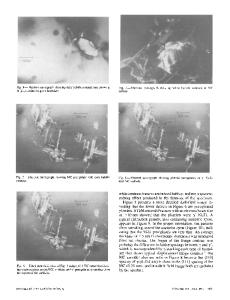Carbide Precipitation Study in a High Heat Resistance Austenitic Stainless Steel HK40
- PDF / 611,695 Bytes
- 6 Pages / 612.12 x 792.12 pts Page_size
- 122 Downloads / 454 Views
Carbide Precipitation Study in a High Heat Resistance Austenitic Stainless Steel HK40 J. García, M. Castillo, S. Rodríguez, M. Carbajal and S. Viveros INSTITUTO POLITECNICO NACIONAL Escuela Superior de Ingeniería Mecánica y Eléctrica (ESIME). Unidad profesional, AZCAPOTZALCO, Av. de las Granjas No. 682, Col. Santa. Catarina Azcapotzalco, C. P. 02550, México, D. F. Email: [email protected] ABSTRACT Austenitic stainless steel HK40 is heat-resistant steel, which is used at high temperatures, used mainly in the form of castings poured by gravity into tubes used in chemical process equipment, metallurgical, petrochemical, steel therefore must resist this oxidation, carburization and sulfatation. One problem in this type of steel is the formation of brittle phases, when subjected to a temperature of 540-900 º C. The aim of this study is to determine the possible presence of M7C3 type carbide, M23C6. The tube has an outside diameter analyzed 4 inches (10.16 cm) and a wall thickness of 0.5 inches (1.27 cm). The samples used for this investigation were cut 5 specimens measures 12.5 mm in diameter and 2.25 mm in length, and underwent a heat treatment at a temperature of 680 º C for 15, 30, 45, 60 and 75 minutes with subsequent cooling in water. The samples were characterized by electron microscopy. This study was performed because the trend in the Petrochemical Industry is to reduce the wall thickness of the tubes to improve heat dissipation and reduce the residual stresses generated in the steel. Keywords: diffusion, grain boundaries, microstructure, scanning electron microscopy (SEM), steel.
INTRODUCTION The heat resistant stainless steels based on Fe-Cr-Ni, such as the HK40 has a wide application for its properties in the food industry, chemical, pharmaceutical, petrochemical and other applications. This pipes material is manufactured by gravity casting, and used in the Petrochemical Industry. This steel has a stable austenitic matrix structure of columnar grains. Through heat treatment of heat-resistant stainless steel type 310, can be obtained by hard structures by heat and cool the water, expecting a massive precipitation of carbides M23C6, M7C3 and a variation of microstructure with temperature established and the time intervals at which the material undergoes hard structures are obtained, thus imparting this steel a high creep resistance [1, 2, 3, 4]. Because of the importance of this phenomenon of how temperature affects the steel causing heavy economic losses to the petrochemical industry in the failure of their pipelines and equipment, research was carried out of this steel, to propose the best conditions. As steel undergo structural changes to the conditions set in this research will be altered in any way the microstructural behavior, which is determined by the tests, which underpin the results. Their mechanical properties are subject to degradation and accumulation of microstructural damage. Dayson [5] has shown that thickening of the microstructure during service leads to progressive loss in both yield streng
Data Loading...











